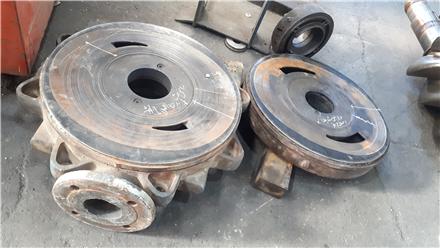Lifecycle costs and the performance of gas turbines depend on selecting the best materials for them. The main reason for proper maintenance in gas turbines is the quality of the material. The operation of gas turbines ends up with gas path degradation, and in the next step, life cycle costs, design, manufacture materials, and maintenance are all influenced by that degradation. Repairing the components of gas turbines is needed when the parts face new troubles in any way during the application. Most commonly, these repairing procedures are done by companies that provide repair services for the industry, and because of the rapid growth of this market, those companies have developed through the last decades. Heavy industrial gas turbines differ from other types of gas turbines, and the methods and limits of repairing hot gas path components from industrial gas turbines are totally different. Each company has its own processes and techniques in these cases.
What Is a Gas Turbine?
There are many types of engines for various functions. The primary function of an engine is to convert a type of energy to another one. Turbines are a kind of engine that converts one kind of energy to another. A gas turbine is an engine that consumes natural gas or different liquid fuels and converts it to mechanical energy. This mechanical energy will move a generator that generates electrical energy. Other types of turbines don’t use natural gas or liquid fuel.
Main Function of Gas Turbines
Turbines are now the key engines in the industry. Various fields and areas need to utilize gas turbines as one of their most needed tools. But in the case of gas turbines, the main function is in trains, aircraft, electrical generators, and ships. Gas turbines are developing every day, and new technologies are used in manufacturing heavy turbines. They also provide energy to pumps, gas compressors, and tanks.
Why Do We Repair Gas Turbines?
Heavy gas turbines are made of specific materials that are resistant to heat and corrosion. A
simple alloy would not work well in a harsh environment as the heat temperature gets super high while a turbine is working. To avoid corrosion and other problems, gas turbines need to use superalloys with particular features. Although the material used in gas turbine components meets the requirements for very hot environments, there is still a need to repair the components. It is because even super alloys can’t resist these environments and need to get repaired to work efficiently. Engineers try to optimize the composition of gas turbines to reduce the level of corrosion and pressure. As a result, gas turbine repair will be done efficiently, and the costs will decrease. Not only the materials of gas turbines will be more developed and resistant, but the process of repairing components is also developing these days, and companies who provide these services are growing and getting up to date.
Cleaning Process, the Initial Step
Cleaning plays a vital role in every repair scheme in this field. If the cleaning process fails, all the other processes will get into trouble too. To determine the exact problem of a component, it is essential to remove the turbine contamination. The surface gets clean, and the components are ready for welding and brazing operation. One of the other reasons for cleaning is when there is a need for heat treatment. In this case, the remaining dirt is likely to diffuse into the material of components. External dirts weaken the structure of components, and here is where cleaning helps the repairing process. Just like other steps of repairing gas turbine components, cleaning has different methods too.
Abrasive blast cleaning can be said to be one of the most popular methods for cleaning gas turbine components. In this method, large quantities of dirt are removed by injecting it into the air stream.
Nozzle Failure, the Most Common Problem
Nozzles failure is one of the things that happen to gas turbines and needs particular technology to get repaired. This is mostly associated with the high-temperature environment inside the gas turbines. Metallurgical evaluation is the first step to do with a nozzle that candidates for repair. Second, the engineers determine the repairability and weldability of the nozzle. There are some requirements depending on the result of the metallurgical evaluation, and the method is also based on them. “As-received” and “Heat-treated” conditions get evaluated microstructurally as a part of the metallurgical analysis. First, they cut a specimen in the shape of a triangle. They mount and polish the triangle specimen to make it ready for the process of metallurgical evaluation. Some other factors that are taken into account when evaluating include observations of intergranular oxidation (IGO), chromium migration (CM), chromium depletion (CD), carbide precipitates (CP), and wall thickness.


